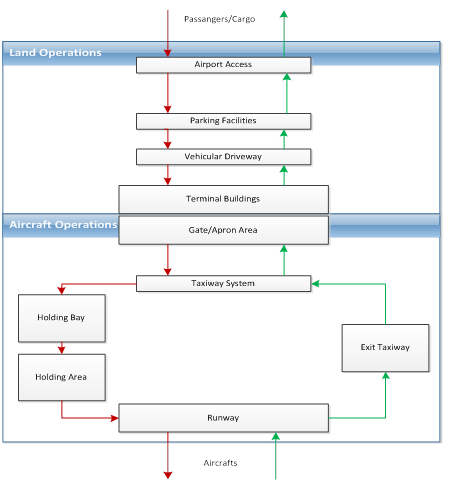Basic Concepts of Airports
Airports are links between ground transportation and air transportation. An airport consists of at least one runway and the buildings necessary for takeoff and landing. An Airport can also be defined as an airfield equipped with control tower and hangars as well as accommodations for passengers and cargo.
Basic components
Types of operations
Operational flow
Basic components
Basic components
The basic components of a passenger airport design include:
|

|
Types of operations
Types of operations
Airports provide two types of operations: land and aircraft.
The land operations are the different activities occurring at the landside of the airport and they include:
- Embarking, disembarking and transferring of passengers, crew, and cargo
- Storage and warehousing of merchandise on land
- Provide inland access and intermodal connections
- Complementary services to shipping carriers
- Provide immigration and customs checkpoints
The aircraft operations take place at the airside of the airport:
- Provide Air Traffic Control Services
- Weather observations
- Control aircraft on the runway and in the controlled airspace immediately surrounding the airport
- All other operations involving the landing and movement of aircraft across the airfield
Operational flow
Operational flow
The airport operational flow has different functions that can go in two different directions: from land to air (red), and from air to land (green). Depending on the direction, the operations may vary.
|
Land to air
Air to land
|

|
